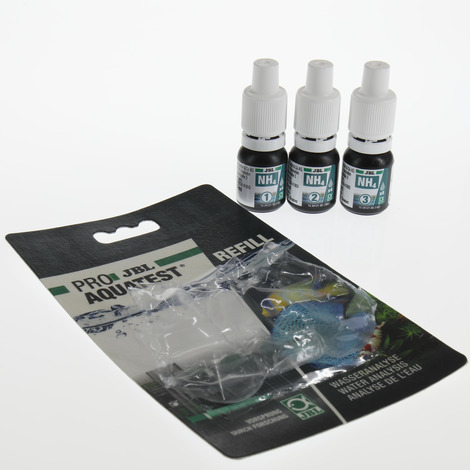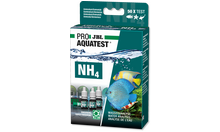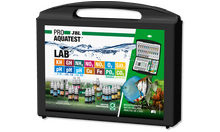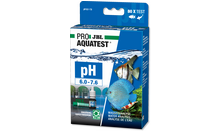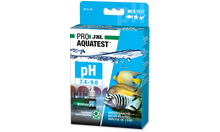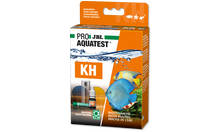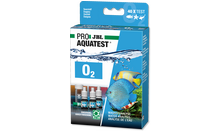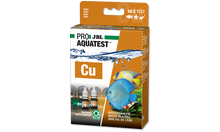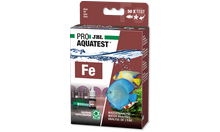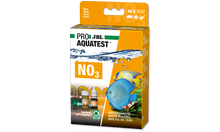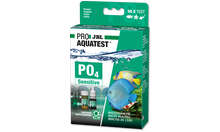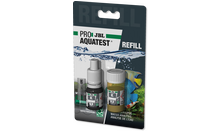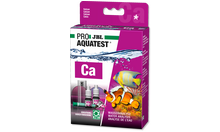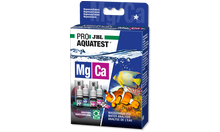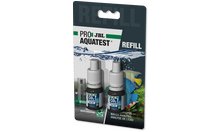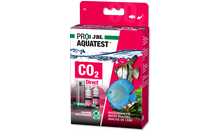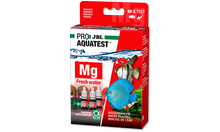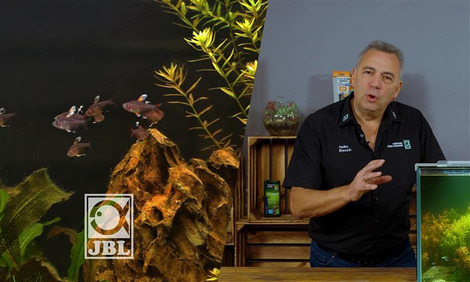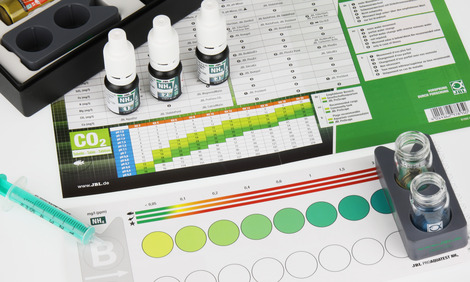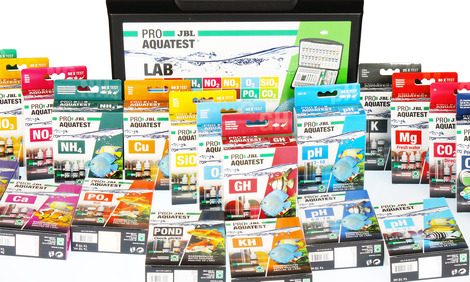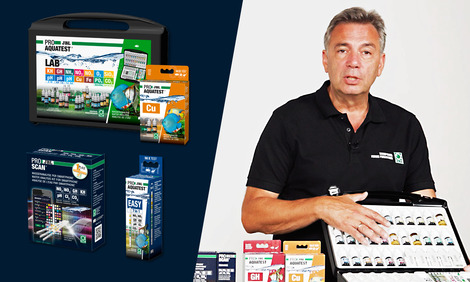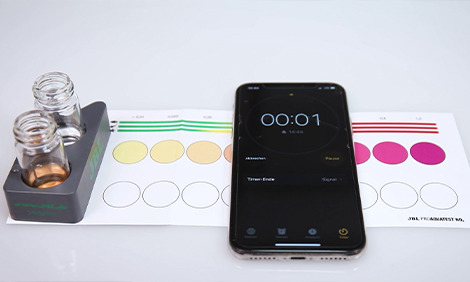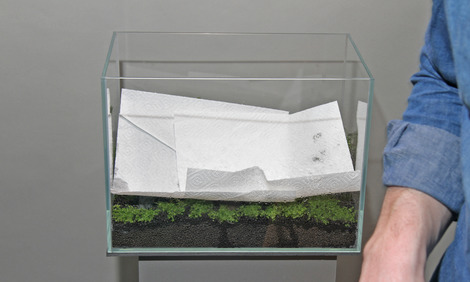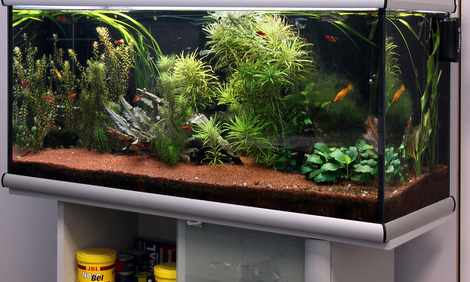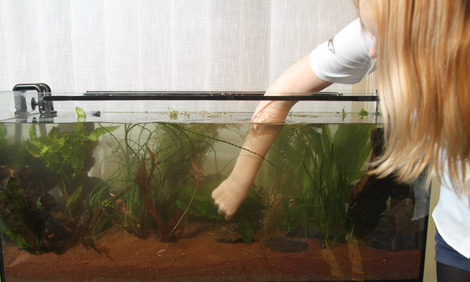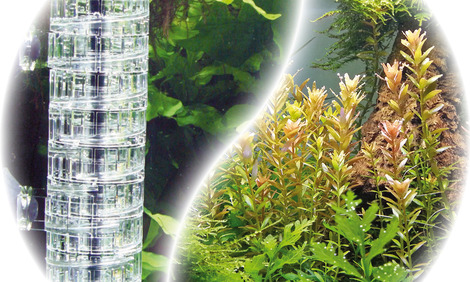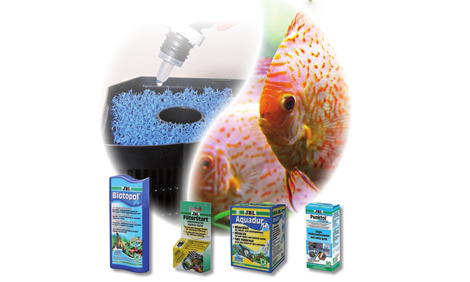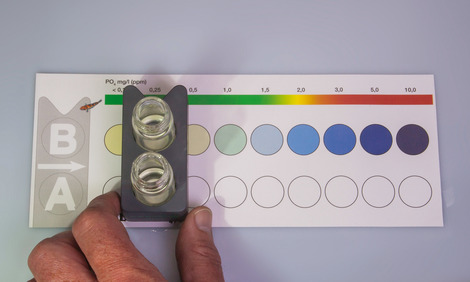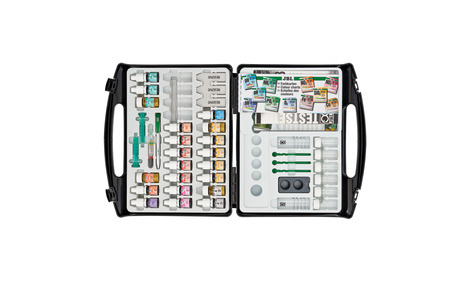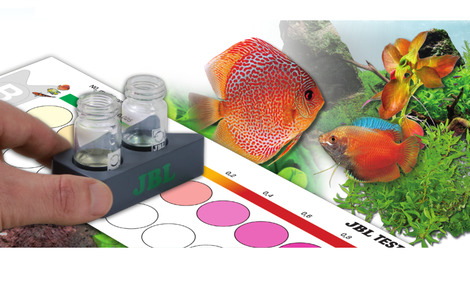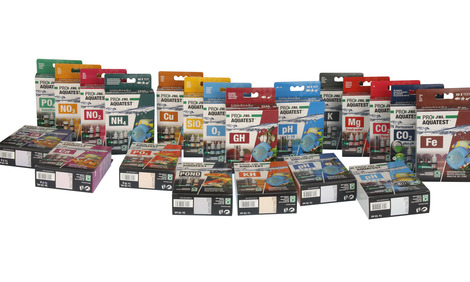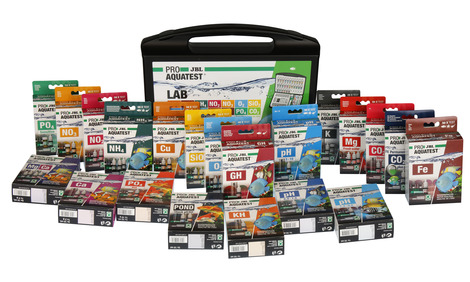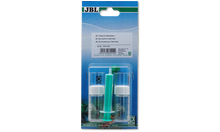Healthy aquarium/healthy pond with conditions close to nature
The right water values are dependent on the fish stock and the plants in the aquarium/pond. Even if the water looks clear it can be contaminated. With bad values diseases or algae can appear in the aquarium/pond. To maintain a healthy aquarium/pond with conditions close to nature it is important to check and adapt the water values regularly.
For each water analysis JBL provides water tests in the form of quick tests or colour change tests. These determine a certain value or several values in one go. With these water tests you can recognise algae problems and negative nitrate, nitrite, potassium, magnesium values etc.
Why test?
The degradation or mineralisation process of all organic substances in the aquarium and pond follows these stages: proteins > ammonium > nitrite > nitrate. By measuring these stages conclusions can be drawn about the “functioning” of the systems aquarium and pond. If the ammonium or nitrite level is too high it can lead to disturbances of the bacterial balance. Ammonium is not usually measurable in a well-kept aquarium with an effective biological filter or in a properly set up garden pond. Ammonium is an important plant nutrient and normally non-toxic for fish. But depending on the pH value, ammonia, which is toxic for fish, can be formed from the ammonium ion.
Recommended ammonium values:
Freshwater aquarium (community aquarium): < 0.25 mg/l
Lake Malawi/Lake Tanganyika aquarium: < 0.25 mg/l
Plant aquarium with few fish (aquascaping): < 0.25 mg/l
Marine aquarium: 0-0.25 mg/l
Pond: <0.1 mg/l
You can analyse the water values you have measured in the JBL Online Laboratory free of charge and receive recommendations.
JBL PROAQUATEST NH4 Ammonium
Quick test to determine ammonium/ammonia content in freshwater/marine water aquariums and in ponds
- Simple and reliable monitoring of ammonium (NH4) and ammonia (NH3) in aquariums/ponds. Checks the biological balance (bacterial activity) in freshwater and marine water
- Laboratory comparator system to compensate the inherent water colour: fill glass vials with sample water, add reagents to one vial, place vials in holder, read values off colour chart and table
- Use: when setting up a new freshwater aquarium: once a day. Initial setup with marine water: once a week. For use in case of fish diseases or fish deaths.
- You will find detailed information and troubleshooting tips about water analysis on the JBL website in Essentials/Aquarium or Pond
- Package contents: 1 quick test, ammonium test NH4 for approx. 50 measurements. Incl. 3 reagents, 2 glass vials with screw caps, syringe, comparator block and colour scale. Reagent refill separately available








